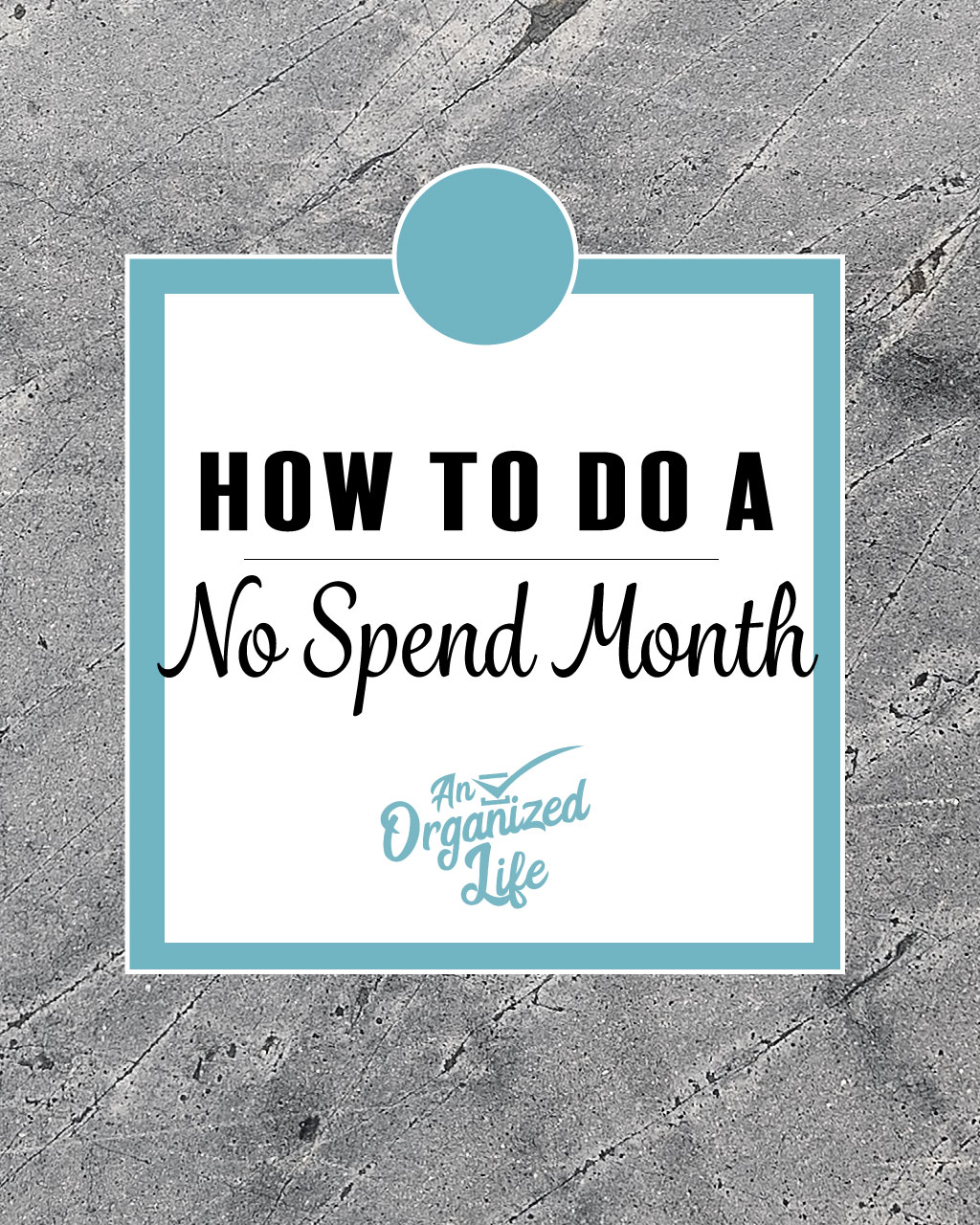How to do a No Spend Month!

One of my favorite habits I’ve established is creating and implementing no spend months. Not only does it allow me to save some cash it also allows me to take a big step back and be fully aware of my spending habits. There are a couple of ways to have a no spend month. One is completely eliminating any purchase that’s outside of fixed expenses (bills, groceries etc.) The other, which is what I do, is more of a conscious spend instead of total elimination of miscellaneous items that may pop up during a month. The key to this type of no spend is to take some time and, being honest with yourself, decide on what you’re willing to spend money on in the upcoming month
I seem to be throwing more and more #nospendchallenges throughout the year, so today I thought I would share how I go about preparing for a month of conscious spending. There’s really only three rules, and although they are incredibly simple they are also incredibly powerful. Lets jump in!
Step 1: Gather supplies
Sit down with your beverage of choice and pull up your budget and calendar. For me, this means pulling up my yearly budget so I can look at the upcoming month ‘s expenses along with my Google Calendar to see what events may be happening. I then open a new Google note and write the headings: ‘Approved Spending’ and ‘Not Approved Spending’.
Step 2: Establish your rules
The rules you implement for yourself will be totally different to everyone else, and they need to be! Like everyone’s personal budget, deciding what to include and what to eliminate for a no spend month is incredibly personal. Having a successful no spend month means identifying purchases that must happen in the upcoming month and planning for them, and also identifying miscellaneous purchases that you and your family will be allowed to make during the upcoming month.
Approved Spending
Bills (utilities, rent / mortgage, school costs, debt payments etc) will be placed in the ‘Approved Spending’ category. Whatever regular bill comes out of your bank account would be allowed.
Upcoming activities or events. Looking at your upcoming calendar, what fun activities will be happening for you or your family? I know for us in the summer months I allocate money into our ‘summer fun’ budget. Will you have a wedding coming up that will need a gift? Birthday parties? Look at your calendar and decide how much you will be spending on these events and put it in your budget (if it’s not already there), but also add it to your approved spending list.
Don’t forget the small things. For me, I approve of myself spending money on two coffees out per week (while I’m writing), a treat for Amelia and whatever else I would like to purchase for myself. For June, I treated myself (and Amelia) to some kawaii keychains. #worthit.
Buy vs Buy
How Much House Should You Buy?
Not Approved Spending
Take a couple of minutes now and look at your bank statements and/or budgeting apps. Look at where you’re spending without consciously realizing it. For me, its needless runs to Target, food and random amazon orders. Write down in your ‘Not Approved Spending’ list what you will consciously try to avoid spending money on in the upcoming no spend month.
Food. Eliminating the budget for any unnecessary or impulse food purchases saves me a tone of money during a no spend month. Saying no to eating out, random grocery trips and snacks at the coffee shop will keep the cost of food very low.
Entertainment. For my family and I it means finding less expensive alternatives to family activities then spending a fortune at a theme park. Maybe you enjoy going out every Friday night with your friends? Maybe you cut it back to 2 times a month instead of 4? Again, this is going to be incredibly personal for each of us. BE HONEST with yourself and decide what is going to work for you and be realistic.
Step 3: Track it!
So, you’ve taken a good look at your calendar and know what events are coming up in the next month and how much that’s going to cost you. You’ve written down your approved spending and not approved spending list and now we’re onto the final step, tracking your progress!
There are so many amazing apps out there to help you track habits! My favorite is Habit Share App. It’s incredibly easy to use and very visually simple and appealing. I also like to design my own no spend tracker and update it through my Instagram stories to help keep me accountable. Whatever works for you, the key here is tracking if you ‘passed’ or ‘failed’ each day. What happens if it didn’t work out one day and you spend money outside the approved spending list? You take a good look at what you spent money on (and more importantly why you spent money on it) learn from it, and try again the next day.
Why not: Add on another challenge!
Take this challenge to the next level and consider finding ways to CUT your costs during a no spend month and add some cash back to your bank account.
Call your phone and internet provider and see if they can give you a less expensive plan
Try a pantry challenge!: shop your pantry and food you already have in your home instead of doing bigger grocery shops.
Find ways to lower your electricity use and therefore your bill.
Let me know if you’re going to try out a no spend month and how it’s going!
<3 Lauren



